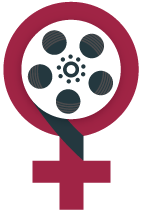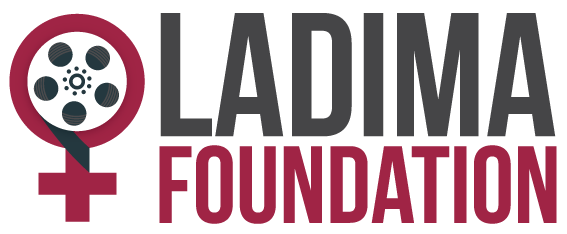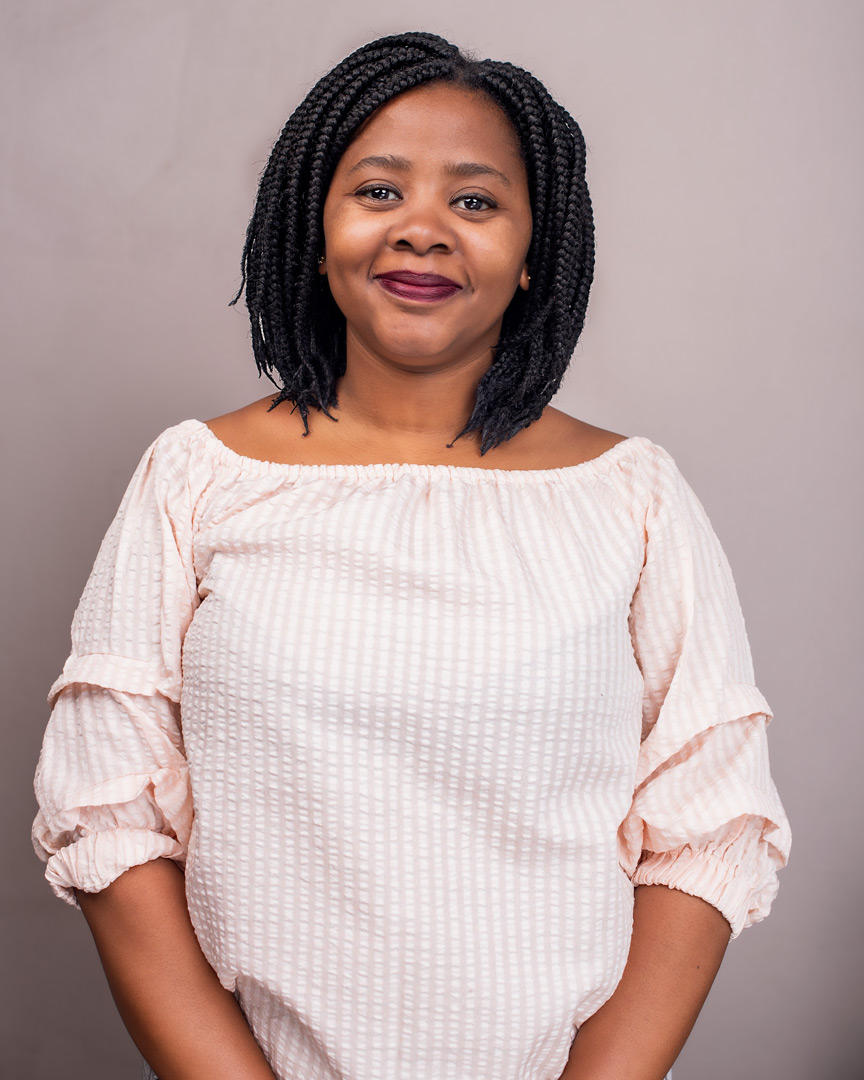LADIMA FOUNDATION EXCLUSIVE:
Zimbabwean multimedia creative (film & TV production, virtual reality production, editing, photography, videography, graphic design) and communications consultant Charmaine Chitate began her artistic career as a member of Children’s Performing Arts Workshop (CHIPAWO).
Based in Harare, Chitate was assistant editor on Rumbi Katedza’s television series The Team which was nominated for Best Series at The Pan-Africa Film Festival of Ougadougou (FEPASCO) in Burkina Faso. In 2018, her photography exhibition was taken to the FNB Joburg Art Fair where she was listed as one of 20 contemporary artists who have the potential to shape and inspire the global art scene – both now and into the future.
At Digital Lab Africa 2019, Chitate’s virtual reality (VR) project ‘I Am A Woman Defined/Stories About Her’ was shortlisted as one of the Top 6 projects in the Virtual Reality Category.
“I enjoy documentary filmmaking the most because it allows me to have a personal conversation with the subject. To be able to tell a story in a way that clearly draws attention to their concerns and uses that to immerse the viewer into the subject’s story. This sense of immersion is what drew me to virtual reality as I believe that it’s becoming a lot harder for us to identify with each other because we don’t have a clear understanding of our respective situations or perspectives.” – Charmaine Chitate
Read our EXCLUSIVE interview with Charmaine here:
Please give us a sense of your background in Film & TV and content creation? Was it always the plan?
My late mother, in conversation, always brought up how I ask way too many questions and that my first English words were “What happened?”. I think it has always been my nature to want to know things, but growing up in the Children’s Performing arts Workshop (CHIPAWO) exposed me to different art forms and showed me that I could also “show”.
I am not your traditional filmmaker who’s managed to attend film school or a visual arts school. Everything I’ve learnt, I owe it to the people who made time to teach me what they know or answered any technical questions I had.
What kind of content do you enjoy creating most and why?
I enjoy documentary filmmaking the most because it allows me to have a personal conversation with the subject. To be able to tell a story in a way that clearly draws attention to their concerns and uses that to immerse the viewer into the subject’s story. This sense of immersion is what drew me to virtual reality as I believe that it’s becoming a lot harder for us to identify with each other because we don’t have a clear understanding of our respective situations or perspectives.
You wear many creative hats – from photography, cinematography, film, TV and VR production, to editing and graphic design. How has this helped you in your career and how important do you think it is for young creatives to diversify their skill set?
I wear many hats as they are a reflection of my creative journey. I initially studied towards an Honours Diploma in Network and Software Engineering and grew an interest in having a more creative approach. When I returned to Zimbabwe in 2006, I interned as a junior graphic designer and was mentored until I was a senior graphic designer working on brand identities et al.
In developing brand identities I noticed that we used a lot of stock photography and we rarely found images of people of colour and images which depicted the perspective we were selling. I began to have conversations with a few friends who were photographers and there began my interest in photography. At a later stage, It wasn’t enough to have a print advert and a static image, I wanted to create motion to share a story and not just the result of a story. To take people on a journey.
I left Quill Advertising and Marketing to join Mega Video – a television production house in 2008. At Mega Video I worked on television adverts, reality shows, and the talent search, CBZ ‘A’ Academy. This was the building off a foundation which had been created by CHIPAWO and also my first job (2003) working for the African Broadcast Network.
At the same time, I attached myself to the Zimbabwe International Film Festival where I, literally, subscribed to every workshop they had, using their workshop programme to up-skill myself and apply to my work at Mega Video. At a later stage I became a part of the Filmbakers, which were mentored by a team from Brazil led by Marcel Izidoro, and I was directly mentored by cinematographer Azul Serra. As I was nurturing the cinematography end, Marian Kunonga – a fellow woman filmmaker – began to teach me video editing…
I think that it’s important for creatives to diversify in their skills not necessarily to be the proverbial “jack-of-all-trades” but to be in a position to view the wider picture and not just their own context. Right now there appears to be a demand for more content creators, as opposed to broadcasters, and that transition if unmade, would leave the broadcaster unemployed and without much of an audience.
This journey was necessitated by a need I saw where we had a broken telephone between what the client wanted and what the creative wanted to deliver on. There was always a different meaning to the same works, so to speak, and I wanted to become that bridge and impact on the turnaround time and quality of delivery. As a result of this journey, I was an assistant editor to Brighton Tazarurwa on Rumbi Katedza’s television series The Team which was supported by Search for Common Ground and went on to be nominated for “Best Series” at The Pan-Africa Film Festival of Ougadougou (FEPASCO) in Burkina Faso. Through my affiliation with the APO Group, I have sports images on Getty and have consulted in different capacities for UNFPA, UNESCO, AWDF, Olof Palme Institute, The ELMA Philanthropies, GOPAcom Thousand Currents and the Friedrich Naumann Stiftung.
Last year your project ‘I Am A Woman Defined/Stories About Her’ placed in the Virtual Reality category at Digital Lab Africa. Tell us a bit about the project…
In search of more immersive forms of storytelling, I came across virtual and augmented reality. I had so many ideas but didn’t have a way of executing them. Most important to me, given my involvement with different womens’ organisations, I could not grasp why it was so difficult for Zimbabweans to accept women in elevated positions or as leaders. Having been raised by a woman who preached and taught me that the role of a woman is way beyond the household – I didn’t get it. I looked back in Zimbabwe’s history and saw many instances where women were consulted as higher beings, as leaders and thought if I could re-create those experiences and place people in their positions through immersive storytelling, VR, then it would be a sweeter pill to swallow. This is how ‘I Am A Woman Defined/Stories About Her’ came to be.
I pitched ‘I Am A Woman Defined/Stories About Her’ to Digital Lab Africa as a virtual reality series with ambisonic sound and it was shortlisted as one of the Top 6 projects in that category. The project seeks to identify the defining moments of different women in Zimbabwe’s history and uses their experiences to support acceptance of today’s Zimbabwean woman in a position of power. Not necessarily politics.
I anchored the project on Mbuya Nehanda – the most prominent woman in Zimbabwe’s history. It is said that her last words before she died were “My bones will surely rise” and Zimbabwe has always taken it as the literal reincarnation of Nehanda. I thought, what if her “bones” were her defining characteristics. I wanted to know Mbuya Nehanda – the woman – what she was like, what she liked/hated. To have been the woman men bow down to and request advice from must have taken a lot of guts…
What is the current state of the Zimbabwean Film & TV/content creation industry in your opinion? And are there opportunities for young, emerging creatives such as yourself?
In general, support for the arts in Zimbabwe is minimal, let alone art for art’s sake. The film industry is one of Zimbabwe’s most under resourced sections of the creative sector. Zimbabwe didn’t have a film school when I started and during that time it was rare to find a formally trained filmmaker interested in mentoring me. This has since changed however, the content created by self-taught creators has been drawing more attention online. A number of filmmakers have opted to share their content through an online platform as this provides a sure-fire source of income. The nature of the Zimbabwean film and television environment has meant that anyone creating for television or film work is doing so out of their own pocket.
As creatives, we are sold on telling our own stories – the Zimbabwean stories – and this is a difficult task when it should be an honour. We have acts of law which still prohibit us as filmmakers and storytellers from telling those stories that are unique to us, our history and culture. Because these acts are so broad, it leaves room for misinterpretation. In the last year, there were inroads for an organisation which lobbied the government for policy reform inclusive of the film sector with the hopes of having guilds which would support resource mobilisation for the sector and upskilling of industry professionals. I am not sure if this will be actualised in my lifetime but whilst we wait on that, we create.
With regards to diversity and gender-equality in the Zimbabwean film & TV industry, what is the climate like in your experience?
Not much has changed from when I first engaged with the film industry in Zimbabwe. The number of women surely has increased but their access to opportunities still hasn’t increased… The Zimbabwean film industry continues to be a highly masculine environment.
What has been the biggest challenge/s of your career thus far?
My greatest challenges have been access to training and resources to purchase equipment, and my portfolio has suffered a blow because of it. As a self-trained filmmaker and VR content creator, I learn as I go. I can ask YouTube but there is no certification for this.
There are no grants, well none that I have been able to access, which permit me to produce the work I want to create. I have to take on administrative jobs for 6 months to a year to raise money for equipment whilst also catering for my day-to-day bills and my responsibilities in the family…
My journey with VR alone has been frustrating and without mentorship… For photography and regular videography, I have been working with the same camera I bought in 2012, it has less focus points than today’s cameras and I have to adapt any ideas I may have to what my camera can deliver.
What has been the highlight/s of your career in the industry?
Though spaced, I have many highlights and these are the most notable:
- I had my first exhibition at the National Gallery of Zimbabwe as part of a collective of photographers who documented the March of 2017.
- Later in the year, the exhibition was taken to the 2018 FNB Joburg Art Fair where I was listed as one of 20 contemporary artists who have ‘the potential to shape and inspire the global art scene – both now and into the future’.
- I was the Deputy Head of Media and Community Liaison for the Harare International Festival of the Arts where I led the development of the festival’s digital platforms and multimedia documentation teams
- Under the APO Group, I got have rugby images on Getty Images making me the first Zimbabwean woman to have images on GI (I am still working towards a stage where I have images under my own name)
- Meeting Aissatou Cisse, the Special Advisor to the President of the Republic of Senegal for the Promotion and Protection of the Rights of Vulnerable Persons including those with Disabilities at an event organised by the African Women’s Development Fund in Harare. Following my conversation with her I always strive to ensure my work is inclusive.
- Meeting Cornelio Sommaruga, former President of the International Committee of the Red Cross (ICRC) whilst I was volunteering for Initiatives of Change at Caux Palace in Switzerland. Random conversations with him on development led to my portfolio incorporating element of development from 2015.
What are you currently working on?
Early this year I pitched ‘Whispering Silence’ to Africalia as a multimedia project inclusive of VR. This is the first grant I’ve received directed towards my own work. ‘Whispering Silence’ is an enquiry into the way the ongoing COVID-19 induced environment has triggered different aspects of our culture into action. Prior to COVID-19, drinking traditional teas or steaming your face with herbs to clear your sinuses was termed as witchcraft. Today, these are some of the ways which will help you reduce your chances of contracting COVID-19. The Keto and other seed based diets we are being advised to take on to stay healthy and avoid obesity were our traditional diets however, they have now become the most expensive diets in Zimbabwe
My contributors have been sharing “ngano” (fables/folktales) which offer solutions to the current restrictions we live under, better health for the future and advise on how to navigate this world. Culture, in the face of COVID-19, is coming to our rescue
I am waiting on feedback from the National Art Gallery of Zimbabwe to see if they would support me with launching the project.
What next for Charmaine Chitate?
What’s next? I am looking at continuing my pursuit of VR/AR reality production and any free courses which will help me upskill and continue to tell stories differently. As I create, I will learn.
Access the ‘Whispering Silence’ project page here.
Read the project rationale here.
Password: Africalia


